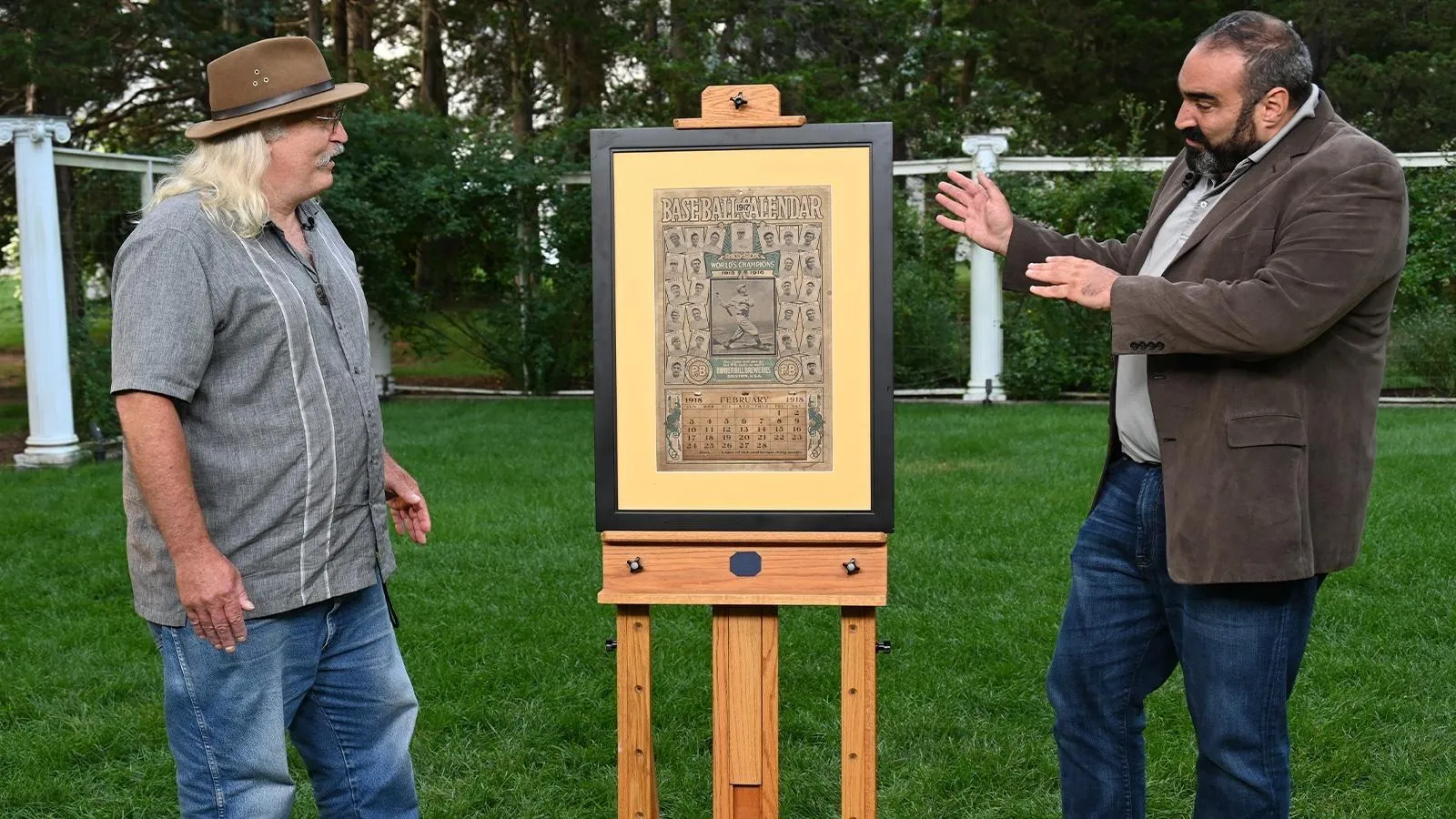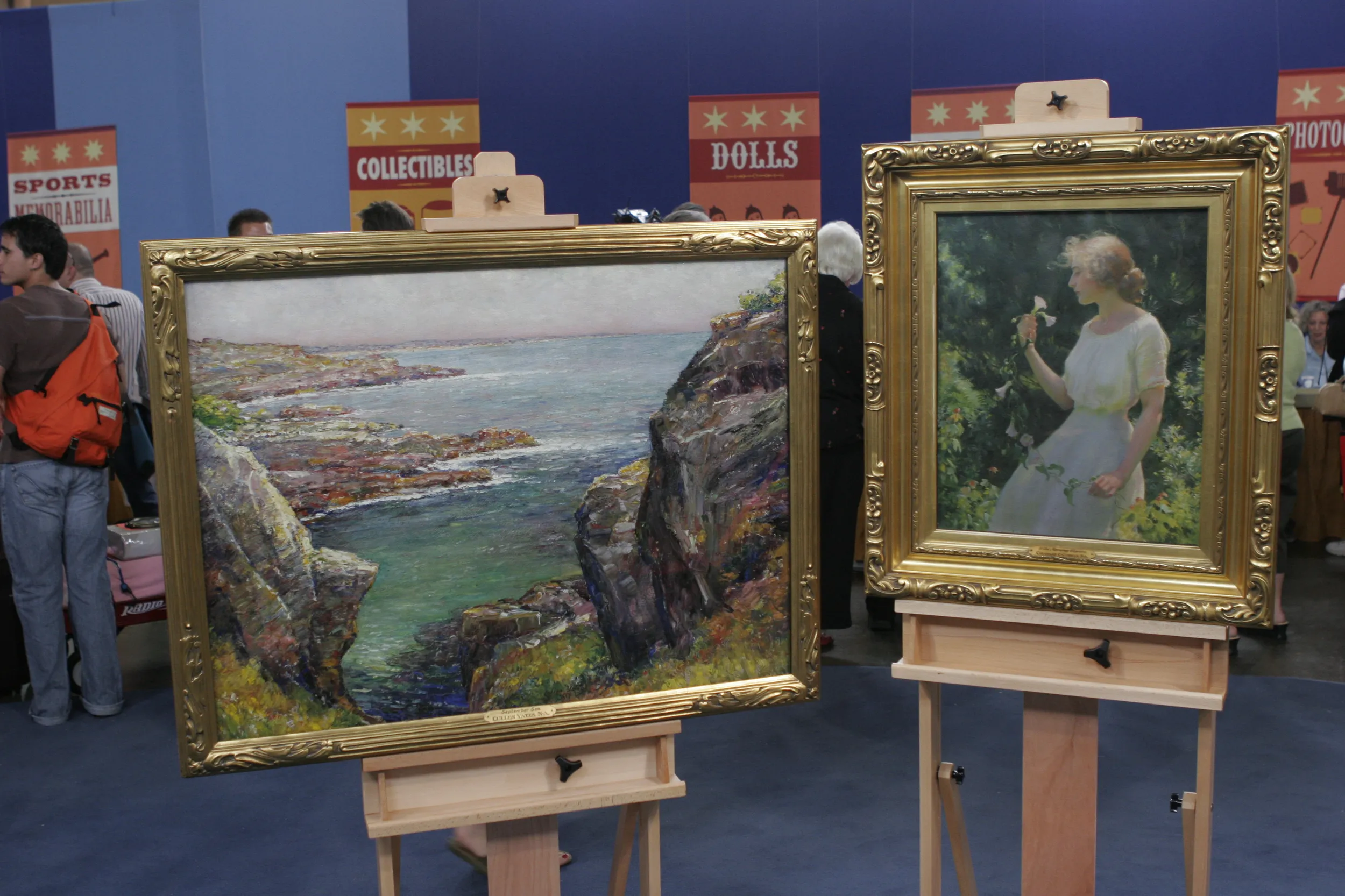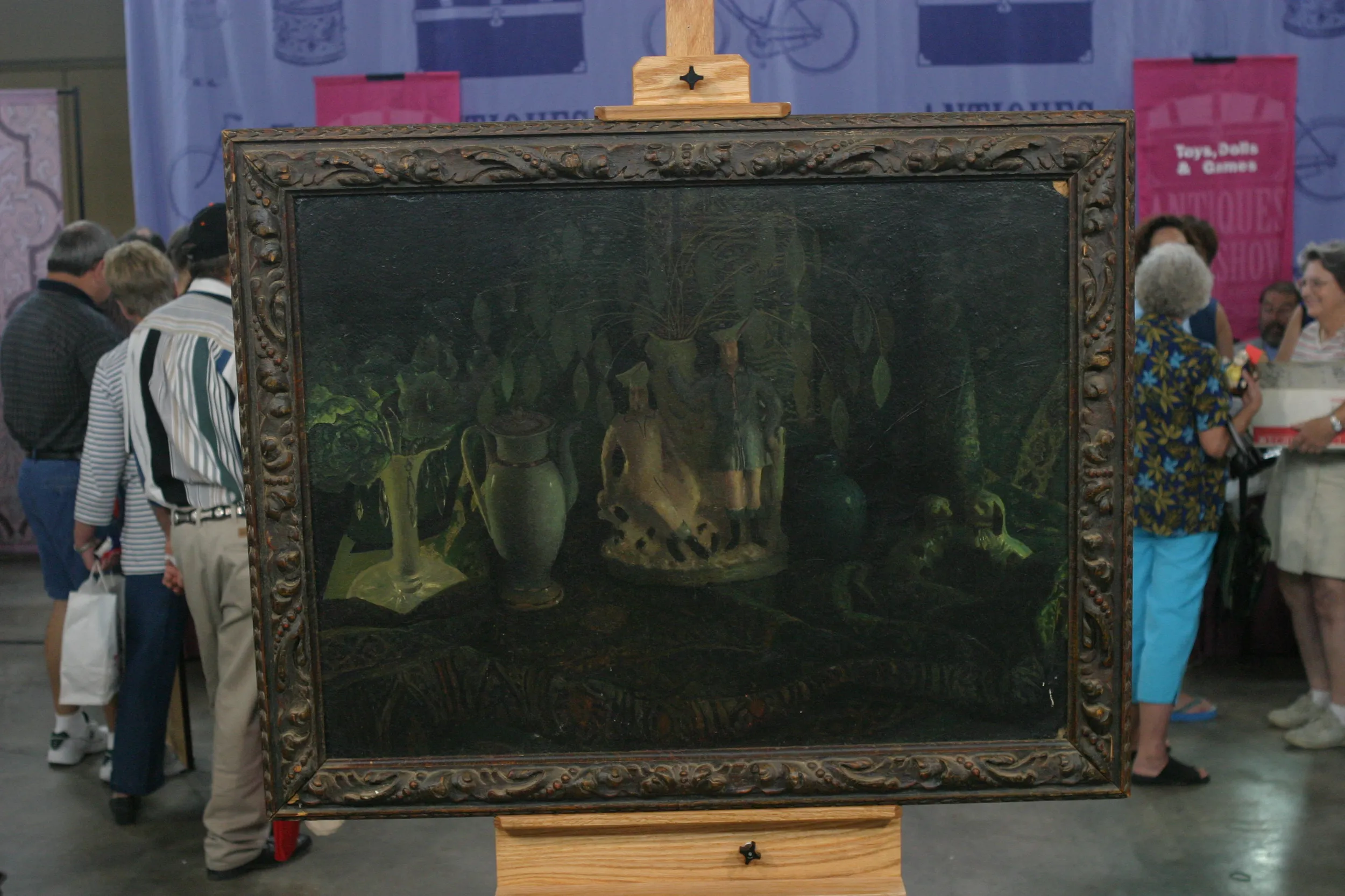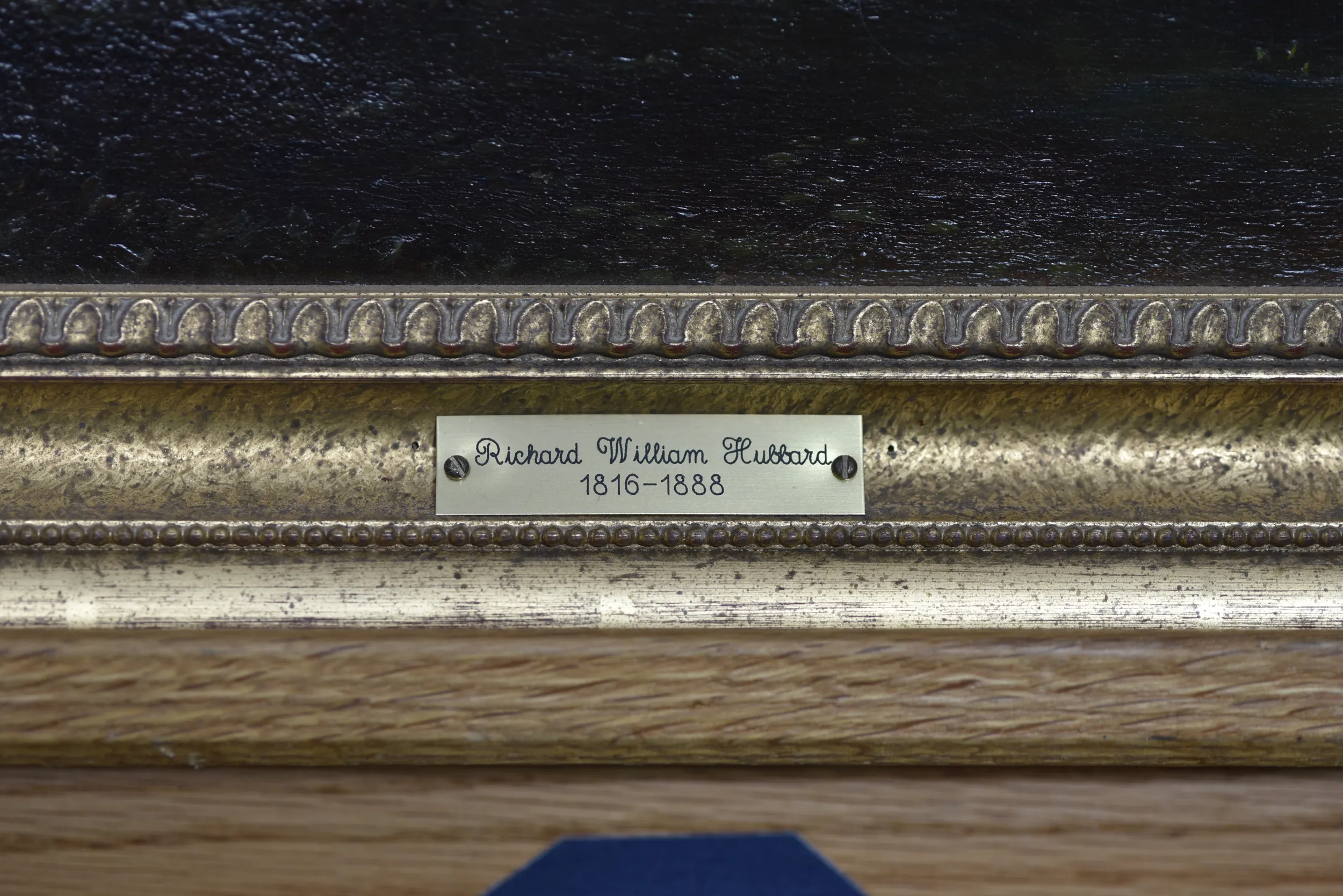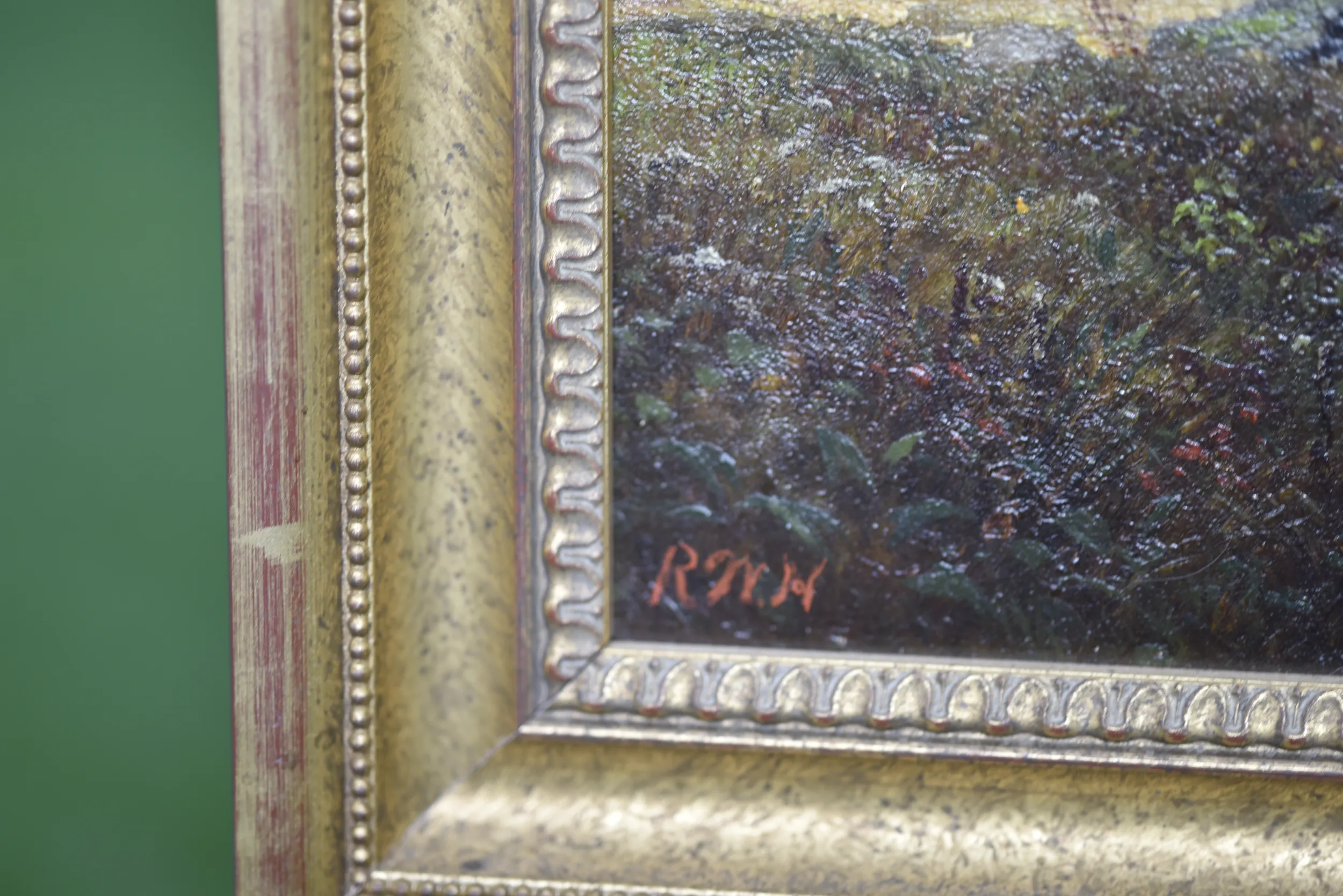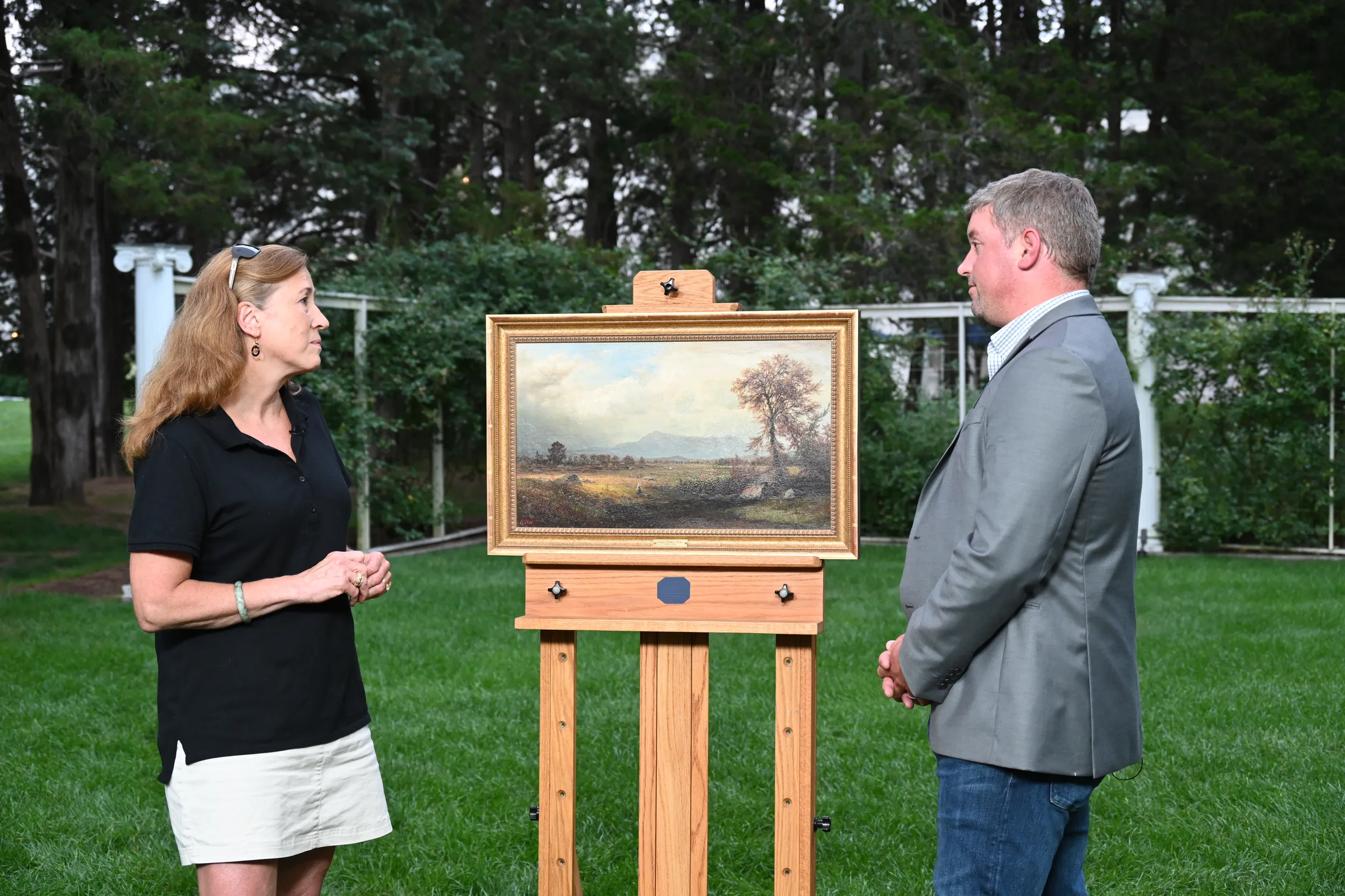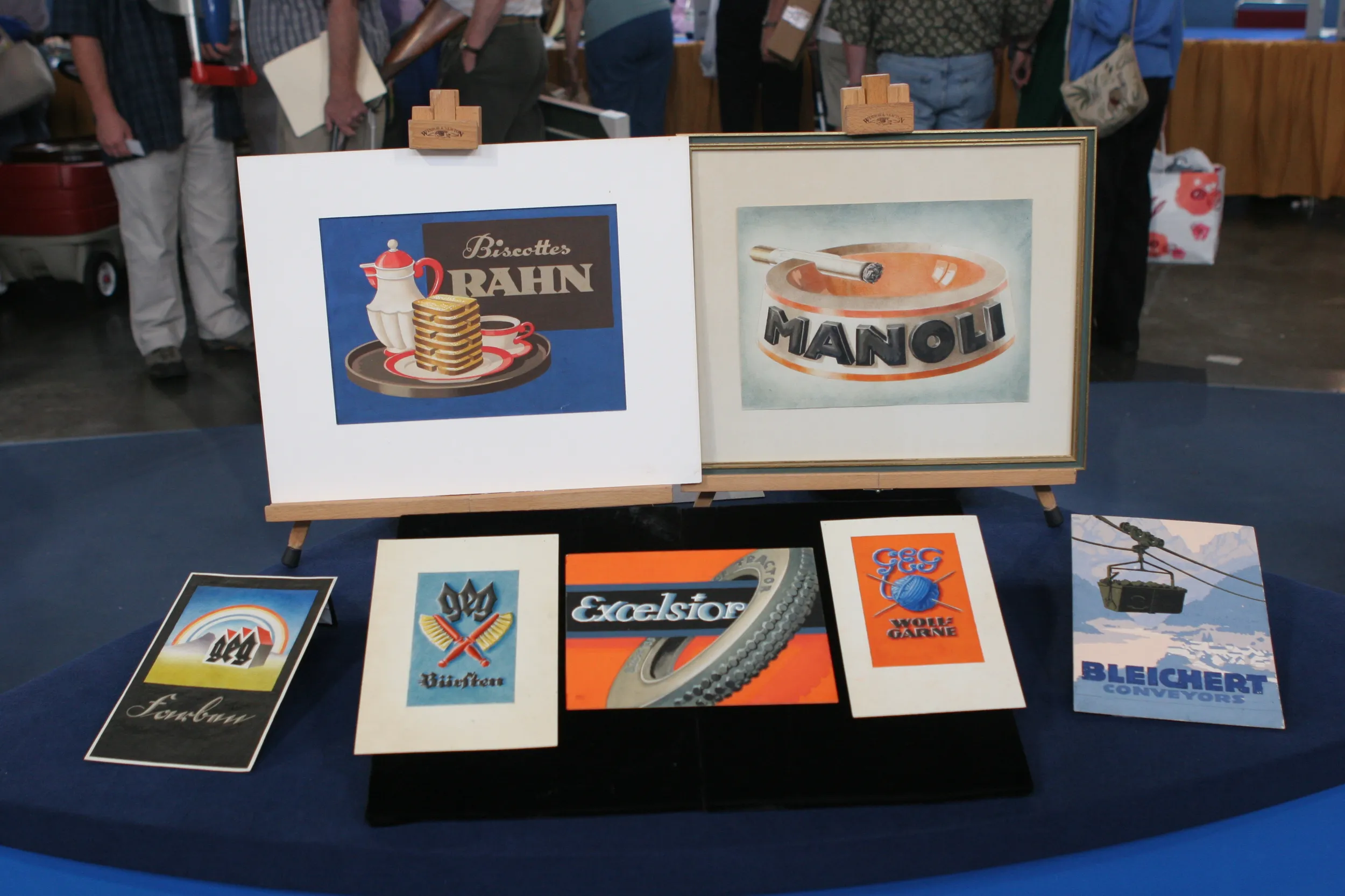GUEST: It's been in my family probably 80 years. My grandmother had it, somebody gave it to her a long time ago, and it was sitting in her attic for probably 30, 40 years.
APPRAISER: Yeah.
GUEST: It was behind glass, and it had a different frame, and it did have a little spot here, I think because it was against the glass. My mom has since moved south, and so it's been sitting in my dining room for about seven years.
APPRAISER: Okay, it's an oil painting on canvas.
GUEST: Awesome. Mm-hmm.
APPRAISER: And you can almost tell that it probably got exposure to heat, and then cold, and heat and cold.
GUEST: Mm-hmm. Right.
APPRAISER: Which causes the oil to deteriorate a little bit, sometimes pool or develop cracks. So it was nicely restored. Whoever did that work, they cleaned the painting. It's probably nice that it was under glass.
GUEST: Mm-hmm.
APPRAISER: Because it protected it some. So currently, it's in a nice state of preservation.
GUEST: Mm-hmm.
APPRAISER: Let's talk about the artist. I note on the plaque that it's Richard William Hubbard.
GUEST: Mm-hmm.
APPRAISER: And he is a homegrown product.
GUEST: Mm-hmm.
APPRAISER: He's originally from Middletown, Connecticut.
GUEST: Oh, wow.
APPRAISER: So uh have you looked into his work or his biography?
GUEST: Not... I mean, I... I recognized the name-- I was in the Metropolitan Art Museum in the American history exhibit, and I saw two of his paintings there. Sure. About seven or eight years ago. So it was kind of cool to think that, wow, I have a museum-quality, like, painting.
APPRAISER: So Hubbard was living and working right in, in the period of time when the Hudson River School of painting, uh that tradition of painting, was really flourishing.
GUEST: Mm-hmm.
APPRAISER: And there were a number of artists from this area who became well known for this style of subject.
GUEST: Mm-hmm.
APPRAISER: So while he is perhaps a lesser-known artist of that particular school...
GUEST: Mm-hmm.
APPRAISER: ...he was a really good one. And you can see it in the work itself.
GUEST: Mm-hmm.
APPRAISER: The Hudson River School tradition, you see these expansive landscapes, and it was really popularized by the Romantic school of painting that the Europeans were engaged in at the time.
GUEST: Right.
APPRAISER: This work probably dates to his mature period.
GUEST: Mm-hmm.
APPRAISER: Probably 1850...
GUEST: Mm-hmm.
APPRAISER: ...to perhaps 1875.
GUEST: Okay.
APPRAISER: It's a nicely sized subject. We have a figure in the foreground...
GUEST: Mm-hmm.
APPRAISER: ...and a mountain range in the background. And try as I might, I couldn't locate that exact range. I suspect it is probably the White Mountains in New Hampshire.
GUEST: Okay.
APPRAISER: It's a really nice example of his work.
GUEST: Mm-hmm.
APPRAISER: It's in a restored state, but a 19th-century painting like this, you would almost expect the canvas to have needed some help...
GUEST: Right.
APPRAISER: ...some conservation at some point.
GUEST: Mm-hmm.
APPRAISER: So have you ever looked into value or ever explored that?
GUEST: No-- when my mother had it um touched up and finished, he said something like $5,000.
APPRAISER: Okay.
GUEST: But I've never had anybody appraise it. It's just, you know, I've never really thought to. It's just been sitting on the dining room wall.
APPRAISER: Sure. So for insurance purposes, I would love to know, get an idea about what it's worth. I would say for an insurance value, I would assign a number of $15,000.
GUEST: Oh, wow. More than I thought. A lot more than I thought. That's really cool. Yeah.
APPRAISER: Yeah. It's a heck of an example for him.
GUEST: Wonderful.
APPRAISER: Yeah.
GUEST: Thank you.
APPRAISER: Thank you for bringing it in.

